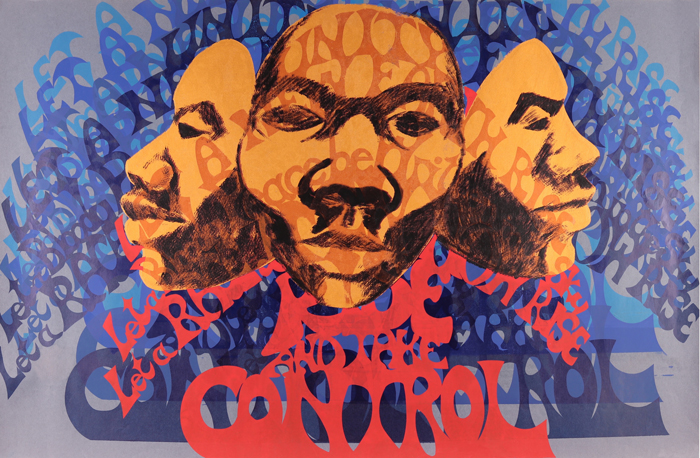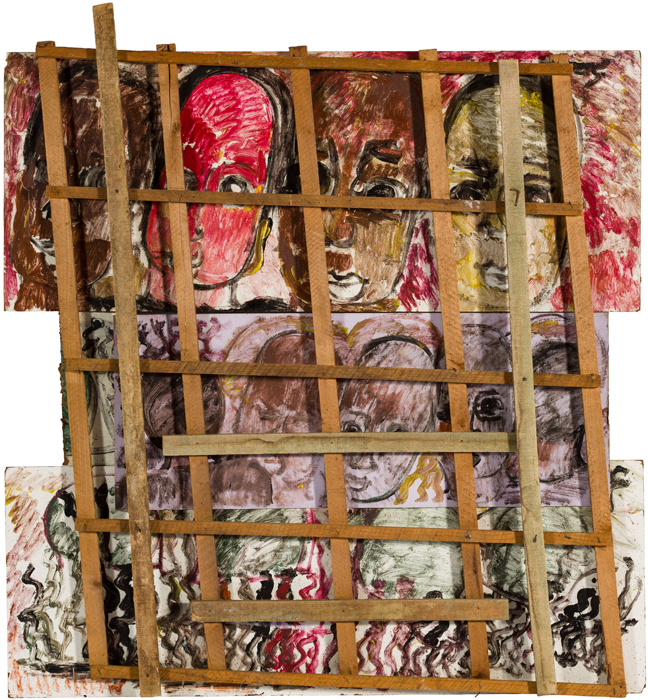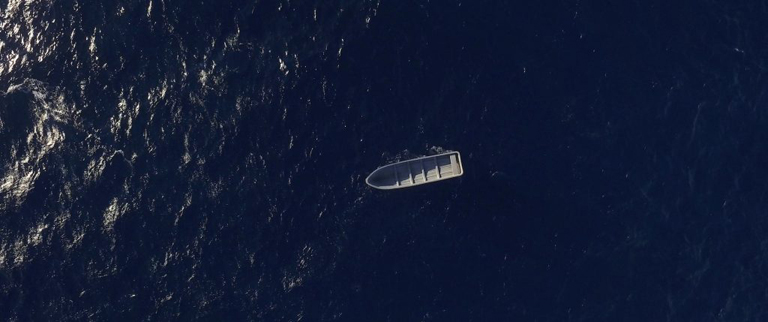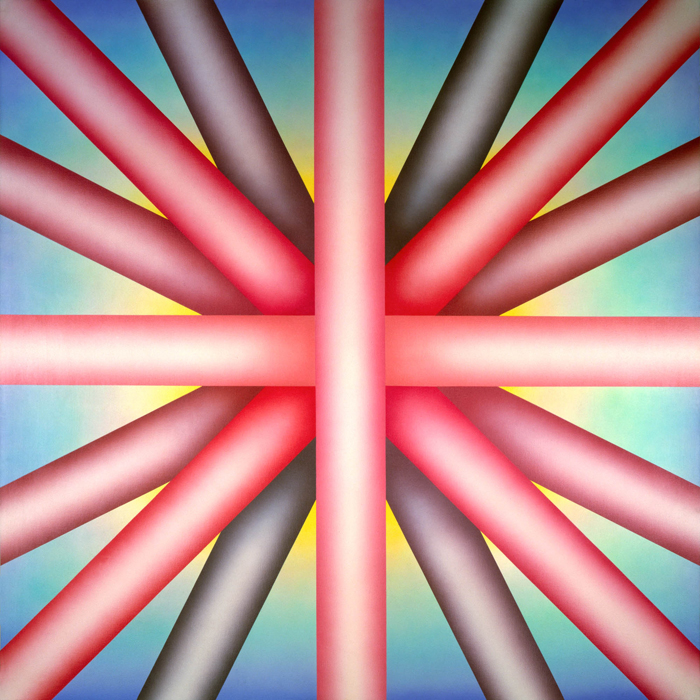If you’re in Miami this week but have had enough of the fairs and don’t like the beach or networking parties masquerading as experiential artworks, then ArtReview recommends you take refuge in the following exhibitions…

AfriCOBRA: Messages to the People
Museum of Contemporary Art North Miami
Through 7 April
At a time when ‘political engagement’ and ‘unearthing neglected histories’ are themes to which artists and institutions feel obliged to pay lip service, this exhibition of work by artists including Barbara Jones-Hogu, Jeff Donaldson and Wadsworth Jarrell, complemented by archival documents and oral histories, promises a reminder of what the real thing looks like. Founded 50 years ago in Chicago, the still extant collective AfriCOBRA (initially the Coalition of Black Revolutionary Artists, soon after switching to the altogether more sardonic African Commune of Bad Relevant Artists) helped to define a revolutionary Black aesthetic that rejected American art’s presumed extension of European art histories. Foregrounding the collective’s role within the wider Black Arts Movement, Messages to the People brings together ten key figures and takes as its framework the ground-breaking 1970 exhibition Ten in Search of a Nation (also the title of a 1969 manifesto) at the Studio Museum in Harlem. The formal and ideological influences of the collective can be traced through to artists including Njideka Akunyili-Crosby and Kerry James Marshall, whose recent acclaim can be read as a mark of the collective’s success in changing how American art and its histories are read.

Purvis Young
Rubell Family Collection
Through 29 June
The recent shift towards more diverse and inclusive art-historical paradigms has included the reappraisal of artforms traditionally labelled (you might say dismissed) as ‘outsider’, ‘folk’, ‘primitive’ or ‘naïve’ (most notably in Lynne Cooke’s influential Outliers and American Vanguard Art, now at LACMA). Purvis Young, a self-taught painter who relied for his art education on the public library after serving prison-time as a young man, chronicled the Miami district of Overtown over a 40-year career that began with his creation of a shifting urban mural – comprising paintings on found wood which he nailed onto boarded-up storefronts – and ended with his death in 2010. The Rubell Family Collection bought the 3,000 works in Young’s studio as a single purchase in 1999. As a result, this major retrospective of an artist who worked on the margins of the artworld but was not ignorant of its histories, chronicling inner-city racism, poverty, inequality and violence under the influence of Daumier, El Greco and Gauguin, raises difficult questions about the categorisation, commercialisation and institutionalisation of art. Just like Art Basel Miami Beach.

SUPERFLEX: We Are All in the Same Boat
Museum of Art and Design at Miami Dade College
Through 21 April
Back in October ArtReview was watching museum-goers getting lost and getting in its way in SUPERFLEX’s Power Toilets/Council of the European Union (2012, a reproduction of that institution’s lavatorial provision) as they tried to ooze through the Maurizio Cattelan-curated group show The Artist is Present at Shanghai’s Yuz Museum. Those visitors who weren’t trying to work out which cubicle contained a sanitary exit were queuing up to select a porcelain throne on which to squat for a selfie. In some respects much of SUPERFLEX’s work is about illuminating or playful disruptions, obstructions and blockages to the networks of power, economics and influence that frame our daily lives. Here in Miami, they’re selecting a series of videos, sculptures and installations that relate to the past, present and future of Miami, so expect themes of migration, climate and finance to be pushed to the fore in the Danish trio’s first US museum survey show. As for the toilet situation… you might want to go before you climb aboard this boat.

Judy Chicago: A Reckoning
ICA Miami
Through 21 April
Artist and educator Judy Chicago famously founded the first feminist art programme in the US (at Fresno State College) back in 1971, which, one year later led to the creation, with Miriam Shapiro, of Womanhouse, one of the country’s first spaces to focus on female perspectives on art. At the ICA Miami, the focus is firmly on her own five-decade career (well, seven bodies of work produced between the 1960s and the 1990s). Test plates from her iconic installation The Dinner Party (1974–9, now in the collection of the Brooklyn Museum), a table at which each place setting commemorates a significant woman from history or mythology, will be shown (for the first time) alongside paintings on car bonnets (first made during the 1960s) and a new smoke work set to go off on 23 February (just to demonstrate that not everything in Miami’s art scene has to orbit its Swiss art fair). Although naturally, now that she somewhat belatedly has her own setting at the table of art history, her works will be peppering the booths at Art Basel Miami Beach as well.
Judy Chicago will be in conversation with Jeffrey Deitch as part of Art Basel’s Conversations series, 2.30–3.30pm at the Miami Beach Convention Center

Tomás Saraceno: Albedo
Oceanfront between 21 and 22 Streets, Miami Beach
5–9 December
From feminists to hippies: the 1970s are truly making a comeback. A site-specific installation dedicated to showcasing and exploring themes around the Argentinian artist’s Aerocene project, Albedo will host community talks, solar-powered cooking and solar-powered flight (via the artist’s Aerocene Explorer – a kind of balloon-kite that can be stored in a simple backpack). The name of the project derives from the Latin for white and is used to refer to the ability of surfaces to reflect sunlight. Offerings will have been made to the weather gods in advance while a ‘curated’ (yikes!) menu is available to visitors on the day. More importantly, you’ll feel like you’re saving the planet for future generations just by showing up at this solar-powered ecofest. Sometimes art does have a purpose.
Online exclusive published on 4 December 2018
